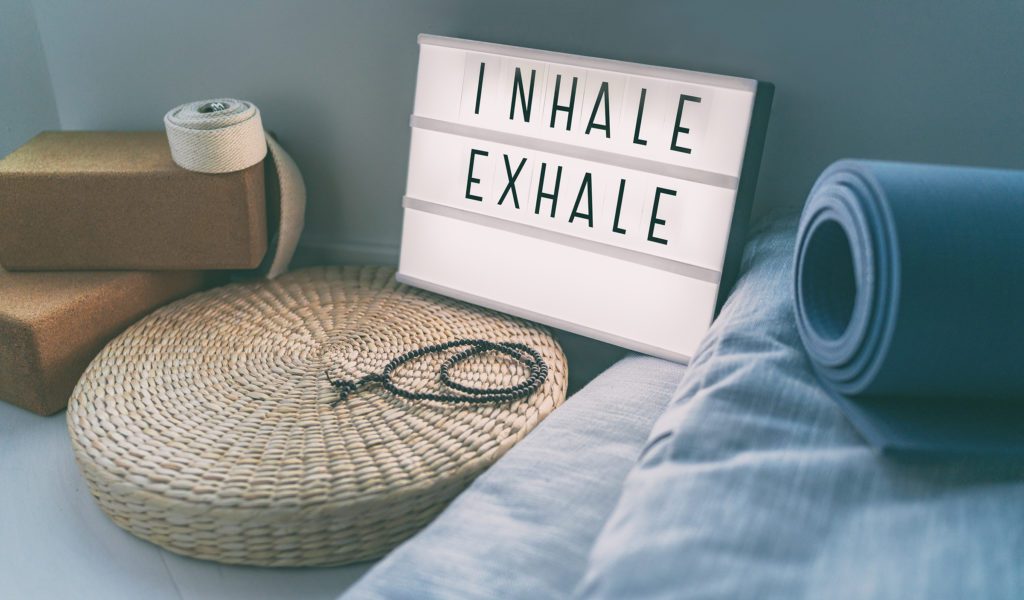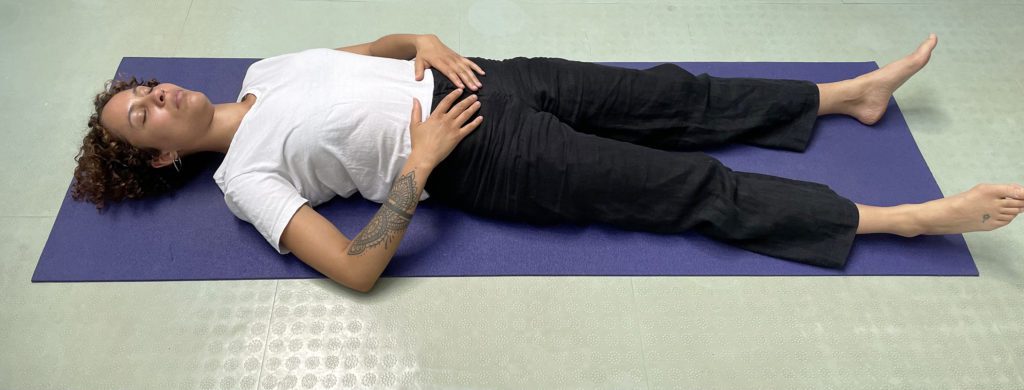
Breathing for Balance
We are not always aware of the effect that the depth and rate of our breath has on our emotional and physical wellbeing. The breath is a powerful tool that we can use to alter and affect our mood, promote mental health and support bodily processes. Breathing for balance can open the door to a calmer, happier and more present way of living.
First let’s look at the depth of our breath…..
Taking a deep inhalation brings in fresh air to oxygenate the whole body and bring focus to the brain. In yogic terms this is known as Prana or Qi or life-force. On a more subtle level, each new in-breath brings the possibility of creating something new as the life-force comes in. After all, another word for inhalation is inspiration.
It’s important to be aware that the quality of the inhalation is only as good as the depth of the exhalation. Without a complete exhalation and emptying of the lungs, there is a limit to how deep our inhalation can be. The exhalation is referred to as Apana, the releasing force. A full exhalation allows us to let go of physical, mental and emotional holding; to release the old and make space for the new.
When we feel stressed, we tend to hold on to our breath. It can be seen as a survival mechanism, as if we fear there will be no more inhalations available to us. This leads to shallow or upper chest breathing creating physical tension in the chest, shoulders and neck. And because we are not getting a full in-breath, we are negatively affecting our mental and emotional state.
Now let’s look at the rate of our breath…..
We tend to breathe between 14-16 times per minute. If we want to quieten the mind and come into a relaxed state, we want to slow our rate of breathing down to 8 breaths per minute. Try inhaling for 4 seconds and exhaling for 4 seconds to get a feel for this slowed down rate.
Slowing the breath down switches us to the parasympathetic arm of the nervous system – rest & digest. We feel calmer and the body can focus on digesting our food.
How we breathe….
If you watch a baby or loved one when they are asleep, you will see the natural rise and fall of the abdomen as they breathe. Natural though it may be, we may not be aware in our waking day how high stress levels, shallow breathing and even feeling a pressure to have a flat stomach, are thwarting the process.
Try this simple practice to connect to your natural breath:
- Lie down on the floor and place your hands on your belly
- Let the belly be soft
- As you inhale, the dome shaped muscle between the chest and abdominal cavities called the diaphragm contracts and flattens and the lungs fill with air due to the vacuum created
- Feel the abdomen expanding under your hands as you on inhale
- As you exhale the diaphragm returns to its dome shape and air is expelled from the lungs
- Feel the navel drawing back towards the spine as you exhale
- Continue breathing slowly and deeply in this way for 3 minutes
- Observe how you feel afterwards

Breathing for Balance alternate nostril breathing:
Breathing through each nostril brings a different focus and resulting change in mood. This a simple pranayama that beautifully embodies the ethos of breathing for balance.
If you want to energise, then breathe through the right nostril which is associated with the masculine sun energy; if you want to be calm and relaxed, breathe through the left nostril, the feminine, receptive moon energy. To come into a balanced state, breathe through alternate nostrils.
Try this pranayama (breathing practice) for 3 minutes or longer, when you get up in the morning or before bed. It is also helpful do before eating as it activates the vagus nerve, triggering the digestive process.
- Sit in a cross- legged position or any other comfortable position with a straight spine
- Rest the left hand on the knee with the tip of the thumb and index fingers touching (Gyan mudra)
- Raise the right hand and use the thumb to block off the right nostril. The other fingers point upwards
- Inhale slowly through the left nostril
- When the lungs are comfortably full, block off the left nostril with the little finger and exhale slowly through the right nostril
- Keep the little finger closing off the left nostril and slowly inhale through the right nostril
- When the lungs are comfortably full, block off the right nostril with the thumb and exhale through the left nostril
- Continue alternating in this way
If you are interested in finding out what breathing for balance can do for you, come along to my Kundalini Yoga class either in person on Tuesdays or via zoom on Wednesdays to explore a whole range of different pranayama.

Breathing by Thich Nhat Hanh:
Breathing in, I know I’m breathing in.
Breathing out, I know I’m breathing out.
As the in-breath grows deep,
the out-breath grows calm.
Breathing in makes me calm.
Breathing out makes me ease.
With the in-breath I smile.
With the out-breath I release.
Breathing in, there is only the present moment.
